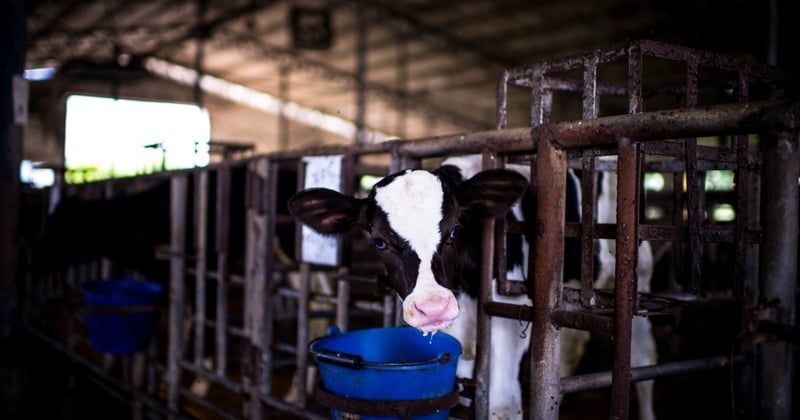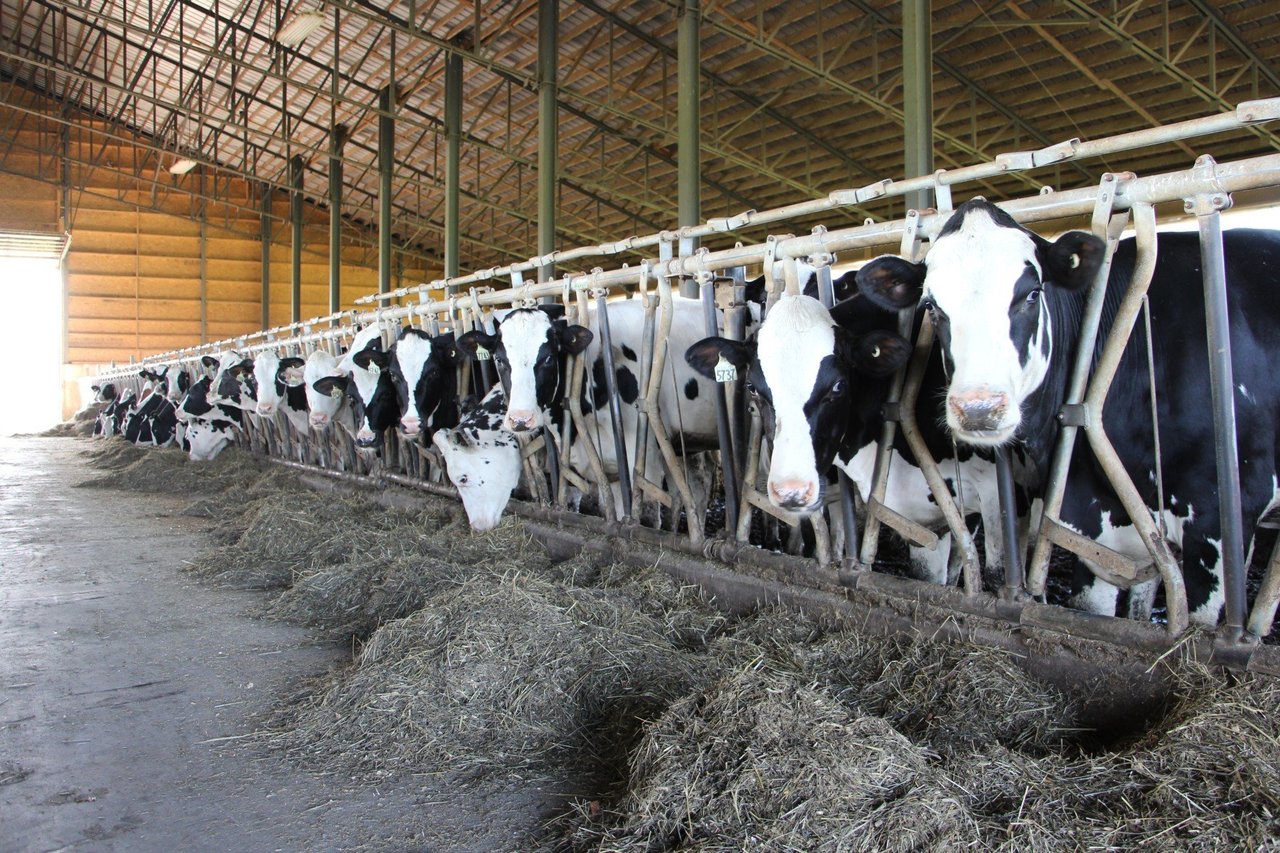
Have you ever wondered what cows eat? Learn about a cow’s ideal, natural diet and how that differs from what they’re fed in factory farms.
When most of us picture a cow enjoying a meal, we picture beautiful pastures with grass and other plants for cows to graze. Unfortunately, this picturesque ideal is not the reality for most cows. Welfare and nutrition is deprioritized in order for factory farms to implement cost-cutting and unsustainable animal feed, such as corn, soybeans, and their byproducts.
Cows’ natural diet consists mainly of grasses, legumes, alfalfa, clover, and hay. They are grazing animals, after all. Many cows also enjoy fruits as delicious snacks. In fact, the average cow eats 2% of their body weight a day, which averages out to 24-26 pounds of food each day. That’s a lot of food!
However, the vast majority of cows in the United States live on factory farms. Factory farms depend on cheap and unsustainable animal feed, such as corn and soy, to maximize profits at the expense of animal welfare. The following is a brief breakdown of what dairy and beef cows are fed on factory farms:
The Diet of Dairy Cows: What Are They Really Fed?
In 2019, dairy cow feed consisted of 39% corn and 16% DDGs (Dried Distillers Grains). In addition, soybeans account for 13% of consumption when combining soybean seeds and meal. Adding DDGs (other processed byproducts) to corn’s share represented 70% of all feed tonnage given to dairy cows in 2019. While dairy cows are given some hay and grass, it makes up a smaller percentage than corn, soy, and DDGs. In 2019, dairy cows consumed 83.2 million tons of alfalfa and hays, in contrast to 93.3 million tons of corn products, 7.5 million tons of soybean products, and 3.1 million tons DDGs.
Factory Farming and Beef Cows: What’s in Their Feed?
In 2019, beef cows’ feed consisted of 57% corn and 21% DDGs. Adding DDGs to corn’s share represented roughly 80% of all feed tonnage given to beef cows in 2019.
Like dairy cows, beef cows are given some hay and grass. It also makes up a smaller percentage than corn, soy, and DDGs. In 2019, beef cows consumed 59.7 million tons of alfalfa and hays compared to 107.7 million tons of corn products, 2.5 million tons of soybean products, and 13.9 million tons of DDGs.
What's the Problem With Factory Farm Animal Feed? Environmental and Animal Harm
The issue with corn and soybeans doesn’t stop there. These human-edible row crops could be fed to humans. Rather, they are farmed and produced at behemoth rates. Raising billions of land animals in the US each year consumes billions of pounds of human-edible crops and millions of acres of cropland–an inefficient system that puts our environment, wildlife, health, and food security at risk. For example, the massive use of pesticides and herbicides in corn production is directly contributing to the loss of biodiversity in the United States. In our Collateral Damage report, it was found that in 2018, 171.5 million pounds of glyphosate (a common herbicide) were applied to corn and soy in the US. Nearly 100.8 million pounds is allocated to animal feed production. Due to the absurd amount of glyphosate use, monarch butterflies are just one species finding their habitats ruined and their population on the path to extinction.
How You Can Help Stop Factory Farm Cruelty
Factory farming causes immense suffering to animals, contributes to the climate crisis, and threatens biodiversity. It’s time to take action and demand change.
